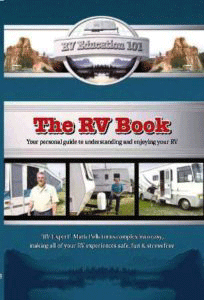RV Education 101 - How To's
RV Winterization Tips
Mark Polk: Your RV is a major purchase, so it goes to say you want to protect your investment. Possibly the best protection in between trips and when the RV is stored for periods of time is an enclosed garage or overhead shelter. But as most RV owners are aware, this is not always possible. When your RV is stored outdoors, all of the components on the RV’s exterior are constantly exposed to the elements. Items on the RV made of plastic, rubber, and vinyl and paint and graphics all get damaged from the ozone in the air and the UV rays from the sun. The paint starts to fade, and the rubber and vinyl products start to dry out,= crack, and deteriorate. Other problems related to storing RVs outside is the constant need to wash the RV and the potential threat of water damage. So, the big question is, what are some simple and cost-effective measures we can take to protect our investment?
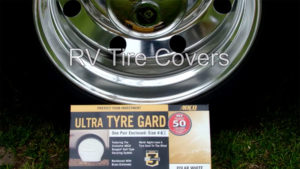 Number one, tire covers. The most logical and cost-effective method to protect an RV stored outside is to cover the RV and the RV’s tires.
Number one, tire covers. The most logical and cost-effective method to protect an RV stored outside is to cover the RV and the RV’s tires.
It is not uncommon to see RV tires with low mileage and plenty of tread ruined by the damaging effects of ozone and UV rays. Inexpensive RV tire covers can protect your expensive RV tires from sun-related damage.
Number two, tire blocking. Another cost-effective method to protect RV tires stored on the ground or on asphalt is to use blocking under the tires. The tires should not be stored directly on the ground or on any petroleum surface like asphalt. Tire blocking solves this problem.
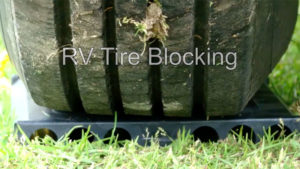 Blocks can be cut from two-by lumber, or there are a number of aftermarket tire blocking products to choose from.
Blocks can be cut from two-by lumber, or there are a number of aftermarket tire blocking products to choose from.
Number three, winterizing the RV. If you live in a region where temperatures drop below freezing, your RV needs to be winterized to protect the RV’s plumbing system from damage. If you don’t winterize the RV, any water left in the RV’s plumbing system will freeze, expand, and possibly rupture the fittings, water lines, and possibly the water heater tank.
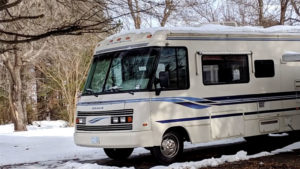 This can result in costly repairs. To avoid this, you can have your RV dealer winterize your RV, or you can purchase our RV winterizing course at RV Online Training and do it yourself.
This can result in costly repairs. To avoid this, you can have your RV dealer winterize your RV, or you can purchase our RV winterizing course at RV Online Training and do it yourself.
Number four, inspect and reseal seams and sealants. To get many years of reliable service from your RV roof and to prevent issues like delamination, it’s important that you inspect all the seams and sealants on your RV periodically. If there’s a way for water to penetrate the sealants, it will find it.
When you inspect the seams and sealants on your RV roof, look closely for cracks or separation in old sealant, where water could penetrate the surface. Prior to resealing any of the sealants, you need to thoroughly clean the old sealant and the surrounding surface. If the old sealant and roof surface are not clean, the new sealant won’t adhere properly. Next, make sure you are using the correct sealant for the job, and reseal the area as required. Number five, RV covers. A cover for your RV provides cost-effective protection, but it needs to be a quality cover designed specifically for the type of RV you have. There are other features to look for in an RV cover like the type of material it is made of and the warranty period on the cover.
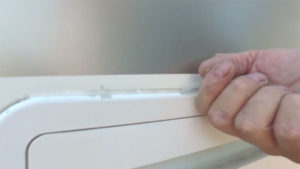 It is important that the material the cover is made of can breathe. If it can’t breathe, moisture can get trapped inside the cover, and mold and mildew is more likely to form. The bottom line is if your RV is stored outside, following these simple, cost-effective measures will help protect your investment for years to come.
It is important that the material the cover is made of can breathe. If it can’t breathe, moisture can get trapped inside the cover, and mold and mildew is more likely to form. The bottom line is if your RV is stored outside, following these simple, cost-effective measures will help protect your investment for years to come.
If you want to learn more about using and maintaining your RV, take a minute to see what we have to offer at rvonlinetraining.com

